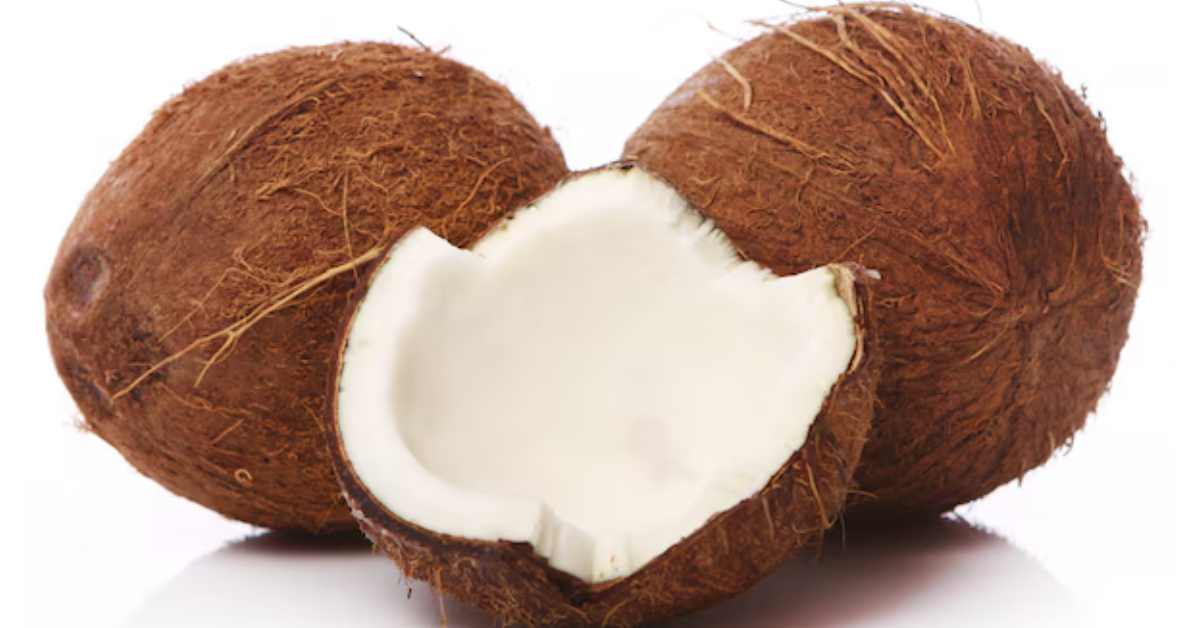Top 10 Calcium-Rich Foods You Should Add to Your Diet
Calcium is an essential mineral which has a huge contribution in the structure and formation of bones and in the main biological functions. It plays a role in the process of ‘transmission of impulses’ that affect communication between the brain and the rest of the body.
Calcium supporting our bones also helps in many functions within the human body. It is important in contraction of muscles including even the heart beat.
Calcium does play a vital role in maintaining skeletal strength but other basic body functions also require it.
Now i will tell you about 10 Calcium-Rich Foods You Should Add to Your Diet
1: Milk (Calcium-Rich Foods )
Milk is a good nutritional fluid that is probably one of the most rich sources of calcium . A cup of milk, that is 240 ml, provides about 300 milligrams of calcium.
In addition to calcium, milk is known to contain protein and vitamin D and other nutrients which are considered to be crucial in maintaining people’s health.
How to Incorporate the Milk into Your Diet(calcium)
- Breakfast Cereal: Use in breakfast meals like cereal or oatmeal after pouring some milk on it.
- Smoothies: Take a source of protein, a fruit, and vegetable; process and mix them with a bit of milk or add protein powder to make a smoothie.
- Coffee and Tea: You can add milk in coffee or tea to get more calcium.
- Cooking and Baking: Add milk to your food in the form of pancakes, waffles, soups, sauces or in baking.
- Hot Beverages: Prepare warm cocoa or warm milk with honey, cinnamon, or vanilla preferably before bed.
- Direct Consumption: You can take a glass of milk on its own, normally or with a natural syrup added into it or cocoa powder.
2:Cheese (Calcium-Rich Foods )
Cheese is one of a popular group of dairy products that are easily digestible, containing a lot of calcium and available in a huge amount of varieties that can satisfy the preferences of many consumers .
Cheese is not only the best source of calcium but also contains many nutrients necessary for human’s body. In addition to calcium which contributes to the bone, mass and density cheese gives the body the quality protein that is required for muscle repair and growth.
Further, some of the cheeses supplement with vitamin D that is relevant in raising calcium uptake within our body. Hence consuming cheese in meals is not only a delight to the tongue but also provides the body with the necessary nutrients.
Nutritional Benefits and Usage Tips (calcium)
- Protein-Rich: Cheese provides a high quality nutrient which is protein and this nutrient is very vital in muscle repair and production.
- Vitamin D: Calcium rich cheeses can also contain vitamin D that enhances the effect of calcium in the body.
- Healthy Fats: Cheese contains healthy fats that are required in the body for several activities to happen.
- Probiotics: Some of the dairy products such as mozzarella and feta have probiotics that help enhance the digestive system.

3:Yogurt (Calcium-Rich Foods )
Yogurt is available in many types and this will help in having different flavours, texture and nutrient content of the yogurt. Traditional Greek yogurt is the thicker version of yogurt and it contains more protein than the normal yogurt. They are available in full fat, low fat, and fat-free making it easy to meet consumers’ different nutritional requirements.
Yogurt has about 200-300 mg of calcium in a 6 ounce serving depending on the type and brand of yogurt. This makes it appealing and delicious in increasing the opportunities of attaining higher levels of calcium in the body necessary in the development of bones and teeth.
Health Benefits of yogurts (calcium rich food):
- Probiotics: A lot of yogurts are produced with live and active cultures or probiotics, which benefit the gut and possibly the immune system.
- Protein: Protein is imperative to repair, build up, and feel full and yogurt is an excellent source of it.
- Vitamins and Minerals: Here, you get from yogurts basic nutrients like vitamin B12, potassium, and magnesium that do a lot of good to the body.
- Serving Suggestions :
- Breakfast: you take yogurt whether plain or flavoured with granola, fruits, and honey to make a healthier and morning meal.
- Smoothies: Fold fruits or low-starch veggies into yogurt and blend in a protein ingredient such as chia seed or protein powder for a health benefiting smoothie.
- Snacks: It is possible to enjoy yogurt while adding nuts or seeds in it to make a perfect snack because it is nutritious, and it has proteins, and fats.
- Dressings and Dips: Apply yogurt to make cream based dressings or dips that would expand the quality and richness of the food.
Including yogurt in diet not only provides calcium, but also a number of other advantages, and will be suitable to be added in meals and snacks.

4: Kale (Calcium-Rich Foods )
Kale is one of the most popular green vegetables packed with nutrients, which is popular for being rich in nutrients and very healthy to consume. It is packed with group B vitamins, calcium, potassium, antioxidants, and fibre, which gives it a place of pride among foods considered to be healthy.
However, all the green leaves are good sources of calcium but from all the green leaves, kale richest source calcium, one cup of cooked kale contains about 100 mg. of calcium. These are mandated to contribute 20% of the daily recommended allowance of adults, though they amount to only 10%.
Apart from calcium, this green vegetable is rich in vitamin A, C, and K where vitamin K is very vital in promoting bone wellness as it helps in calcium uptake and deposit in the bone matrix.
Some of the nutrients found in kale include potassium which plays a role in maintaining the blood pressure rate, and that it is a low calorie food that can be taken by anyone wishing to lose some weight.
Kale is a rather universal plant, and it may be used in many meals like salads, soups, shakes, and stir-fried meals since it adds just as much nutritional value as richness to the recipes. Just to indicate, incorporating kale into your daily meals are beneficial to your health in regard to your bones, immunity and cardiovascular systems.


5:Spinach (Calcium-Rich Foods )
Spinach is a green vegetable that comes under the group of the Loosely greens also known as the leafy green vegetables. However, spinach is not among the food items that are most abundant in calcium among the green leaves but it has a bit.
Therefore, depending on the amount of cooked spinach prepared in a cup, it contains about 245 mg of calcium Thus, one can be confirmed that it having enough calcium .
Other nutrients that can be obtained from spinach are; Vitamin A, Vitamin C, Vitamin K, folate, Iron, Magnesium.
- Salads(calcium): Raw spinach leaves should also be eaten as the beginning base for salads or ingredients in preparations of salads.
- Smoothies: Mix spinach to fruits so as to vitamin and mineral list to a daily intake.
- Sauteed or Stir-fried: Spinach cooked with garlic and olive oil in a pan is one of the simplest and quickest meals, one only needs to chop the spinach and fry for some time.
- Soups and Stews(calcium): However, to include spinach in the soaps and sundries, spinach should be added to the boiling soaps and sundries fluids last. They tend to become soft quickly and the role it plays in the plate is only to beautify the dish with its colour and to provide nutrients.
- Egg Dishes(calcium): Spinach can just be used by blending it and adding it to omelets, frittatas or simply scrambling the eggs which can be taken as a breakfast/brunch meal. The heat which comes from eggs will cook the spinach to blend and the taste of both the two will mix.
- Pasta and Grain Dishes(calcium): Add it to paste sauces, risottos or any other foods which may be a type of carbohydrate, add it to quinoas. It enhances the colour of the dish, at the same time enhancing the nutritive value of the dish without altering the taste drastically.
Spinach should be incorporated in foods that one takes on a daily basis in order to be able to enjoy the calcium value it has as well as other nutrient values that are good for ones’ body.

6: Collard Greens (Calcium-Rich Foods )
Collard greens are also called resolved green and are types of leafy vegetables, which brings out strong flavour and are very nutritional.
They have more rich amounts of calcium in them and therefore are common foods for people who want to improve their calcium consumption naturally. In a cup of cooked collard greens, there is as much as 266 milligrams of calcium which helps in the body’s daily dietary requirement for calcium for bone strength and solidity.
In addition to calcium, collard greens are packed with essential vitamins and minerals
Vitamin A: It helps with the health of one’s vision and Immune as well.
Vitamin C: Aids in cell protection as an antioxidant and enhances skin and immune system.
Vitamin K: Is involved in blood clotting and has involvement in the framework of bones.
Fibre: Beneficial to digestion and is useful in lowering cholesterol.
Folate: Helps with the division of the cells and it is also useful in preventing the formation of neural tube defects during pregnancy.
Collard greens provide minimal amounts of calories and carbohydrates; therefore, the food is a great addition to meals since it provides the body with nutrients without increasing its calorie intake significantly.
Thus, it serves as a nutritional bonus when collard greens are included in a daily diet as a source of various nutrients along with bonuses such as better bone and immunity health, among others. They are best eaten as a side dish, incorporated in soups/stews, or even in salads/wraps; these recipes introduce quality flavour and nutrition to the meal.

7: Fortified Orange Juice
How to make orange juice ( Best Orange Juice Recipe )
In fortified orange juice, about 300 milligrams of calcium is present per 8-ounce serving; yet, this quantity may fluctuate based on the brand and fortification levels. It can meet approximately 30% of the daily recommended intake of calcium for most adults for which this mineral is considered to be rather valuable.
Consumption tips for fortified orange juice include
- Daily Intake: One can try to take calcium through fortified orange juice since it can be challenging at times to ingest dairy and other calcium containing products.
- Quality: In order to get the right amount of calcium and other nutrients, always indicate the fortification levels of the brand you are choosing.
- Pairing: It may be taken with breakfast or in a day with an innovative new product of fortified orange juice. It is perfect for break-fast, taken with cereals, whole grain meals or even toast bread.
- Variety: That is why the daily addition of fortified orange juice to your diet includes calcium, but it is recommended to have calcium from different food groups.
Thus, the addition of fortified orange juice to one’s diet can indeed be a nice solution to increase the consumption of calcium and help the bones. It is tastier than the habitual calcium promoters, and it contains the beneficial components that are necessary for the human body.

8:Fortified Plant-Based Milks
Fortified Plant-Based Milks that are not derived from animals such as almond, soybean, oats and amongst others. Each type offers unique flavours, textures, and nutritional profiles
Almond Milk: A liquid produced from almonds themselves, to which water is further added, almond milk is quite blander, though with a hint of almond’s taste. They include calcium and vitamin D for supporting and maintaining bone and teeth health.
Soy Milk: This is made from soybeans and it has a smooth texture with a high nutritional property of protein. It is basically calcium and vitamin D fortified, and therefore falls under one of the preferred plant-based milk substitutes.
Oat Milk: Oat milk can be described as the beverage made from oats and water, and the food product is characterized by a mild and slightly sweet taste along with a creamy texture. However the juice is commonly fortified with calcium as well as vitamin D and also the B group of vitamins.
Some plant based milks are fortified with calcium to be equivalent to the calcium of dairy milks, the average calcium in plant based milks is 120mg-450mg of calcium per 250 ml serving depending on brand and level of fortification.
Here are some usage suggestions
- Drinking: Sip the different flavoured plant-based milks neat or as a liquid base in smoothies and shakes or even as a vessel for chai or coffee.
- Cereal: best to be consumed over breakfast cereals or granola in order to be considered as having a healthy start of the day.
- Baking: As you might do to bake foods as muffins, pancakes and breads substitute dairy milk with plant based milk to an equal extent.
- Cooking: Substitute the cow milk, goat milk or any other type of animal milk with the plant base milk in the foods which are of non-savoury nature like soups, sauces and creamy pasta.
- Coffee and Tea: It can be used as Non dairy creamer or added a drop or two of honey or maple syrup for making it sweeter.
Therefore, through methods such as fortification, Producers of plant-based milks can make them nutritious by adding essential nutrients such as calcium which has an impact on the health of the body bones and Vitamin D. Choose these kinds because they include such nutrients to meet the maximum nutrition, and they are appropriate for use in various recipes.

9:Almonds (Calcium-Rich Foods )
Almonds are classified under nuts, these are healthy, tasty and are incorporated in most diets. While it is well understood that almonds are not very rich in calcium, compared to dairy products or green leafy vegetables they do contain a small amount of calcium. One ounce (about 23 almonds) contains approximately 76 milligrams of calcium, along with other essential nutrients
Protein: It also contains other nutrients as the plant protein contributes approximately 6 percent per ounce. Protein is one of the major macronutrients and it plays a significant role in the body building tissues and repair of tissues especially the muscles and it is also known for other functions.
Healthy Fats: These are also a good source of monounsaturated fat that is useful in reducing L-DL or better still ‘bad’ cholesterol and therefore lowering the incidences of heart diseases.
Vitamin E: Almond is endorsed with vitamin E that protects the cell against the impact of free radical.
Fibre: These ones are useful as they provide the body with dietary fibre that helps in digestion leading to that feeling of satisfaction.
Ways to Enjoy Almonds as a Snack or Ingredient
- Raw or Roasted: : Almonds – raw or barely toasted and seasoned with a minimum of sea salt.
- Trail Mix: Almonds should also be incorporated with other nuts, dried fruits and seeds in such a way that they can be packed in a snack that can be taken while on the move like a trail mix.
- Nut Butter: Roast almonds and process almonds in a food processor to make a paste in this preparation of almond butter. It may be spread applied to bread as jams or toasts, or it may also be in a form of sauce applied to fruits and vegetables that are meant to be dipped in.
- Salads: Use in salads, for some of those preferred feels of the nuts and that texture.
- Baked Goods: Integrate almonds in baked products like muffins, biscuits, granola bars amongst other baked meals either as garnishing or as part of the ingredients in the preparation of the food product.
Thus, almonds are a versatile food item and are capable of satisfying the taste buds along with nutrients like calcium, proteins, healthy fats, and antioxidants. They can also be taken as snacks and also enhance the taste of most meals that you would like to add nuts to and make it richer in taste and nutrition.

10: Sardines and Salmon
Sardines and salmon are two types of unsaturated food that people are aware of containing rich nutrients for example calcium. This type of fish is precise concerning its utilization, because while preparing to consume, its bones are ingested alongside it and are a good source of calcium.
Here’s a breakdown of their nutritional benefits
Calcium Content: Sardines and salmon are full of calcium. Therefore the 75-ounce serving of canned sardines is estimated to have around 350 mgs of calcium and the same serving of canned salmon contains around 180 mgs of calcium.
Fatty Acids: Sardines and salmon contain large amounts of DHA or eicosapentaenoic and docosahexaenoic acids respectively. These fats are essential in the functioning of the heart contrary to the belief that it leads to cholesterol in our bodies, another crucial fat is the; brain fats and these; fats possess anti-inflammation abilities in the body.
Protein: First of all, they are sources of meat – these foods are characterized by a very high protein quality that is necessary for muscle repair, growth and maintenance.
Vitamin D: Sardines and salmon contain other natural vitamins particularly the vitamin D that is needed to strengthen the bones and help in enhancing the eating habit of the body.
Ways to Enjoy Sardines and Salmon
- Canned: Eat canned soft tinned sardines and salmon directly from the tin thus they are regarded as a good snack especially when one is hurried by time.
- Salads: This way you will get your required amount of protein Include flaked sardines or salmon for your salad for lunch. It is highly recommended that Pizza should be served with green lettuce and tomatoes, and little olive oil, they are meals that can be taken at any time of the day.
- Sandwiches and Wraps: Sardine or salmon sandwich with lettuce and tomatoes are other options or a boat meal which has whole-grain bread or tortilla plus avocado or hummus spread.
- Pasta Dishes: The simplest way of adding sardines or salmon into pasta for instance spaghetti or penne in light tomato sauce or pesto.
- Sushi and Sashimi: It can be consumed raw or cooked and packed in tin; it can be used to prepare sushi rolls or eaten raw as sushi sashimi.
Introducing sardines and salmon into one’s diet is also an interesting way to enforce the intake of two nutrients that are vital for ones’ body especially when it comes to bone formation and heart health.

Conclusion
if you include calcium rich food in your diet it is valuable for strengthening the bones and promoting the general well-being of a person. Thus, consumption of these foods is essential for avoiding bone disorders and for the general health of the individual.
I will suggest you to add these products containing calcium like the items of dairy products, green vegetables, some fruits like oranges, plant-based products like soy milk, almonds, and fishes with soft bones like sardines and salmon in your diet .











Post Comment